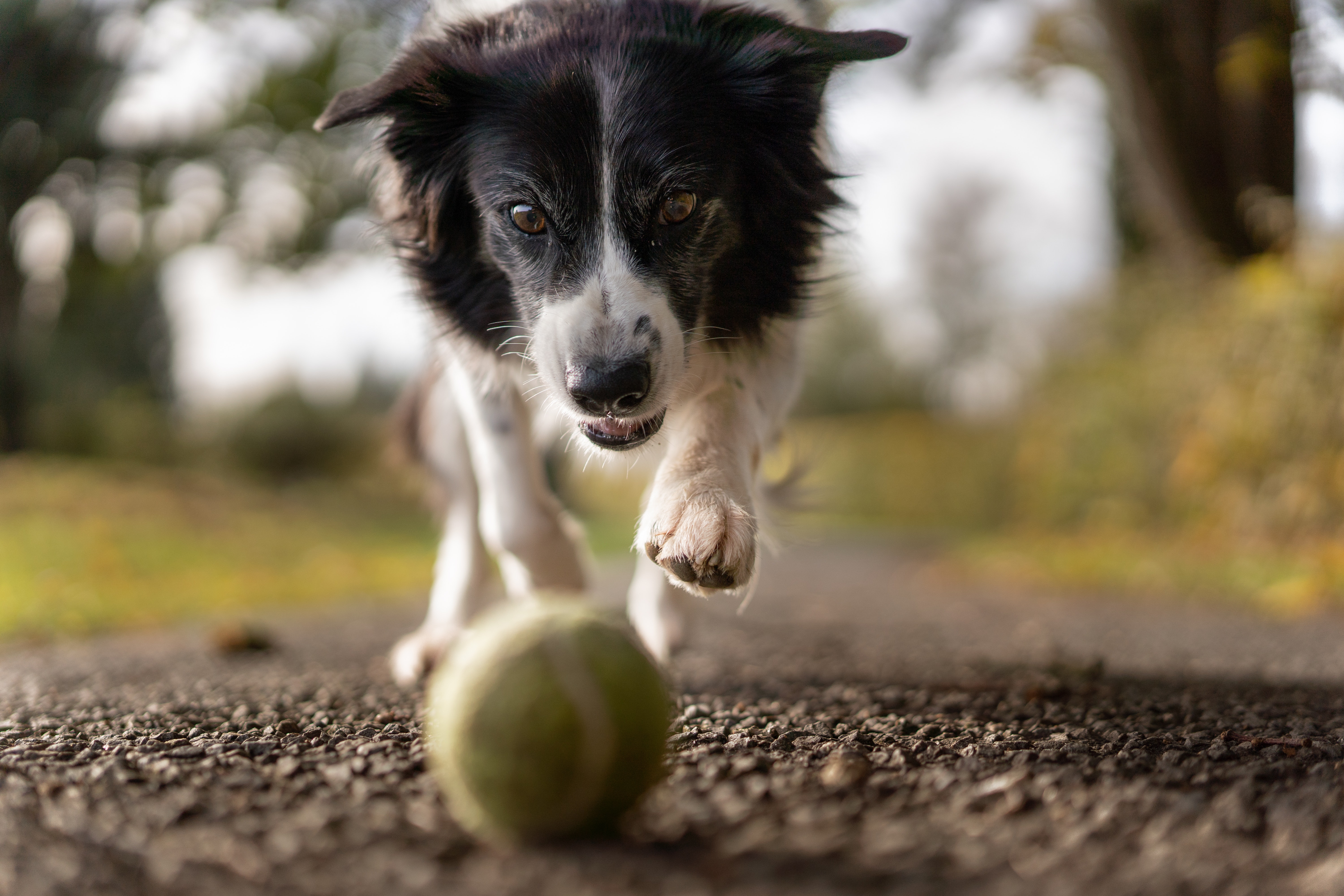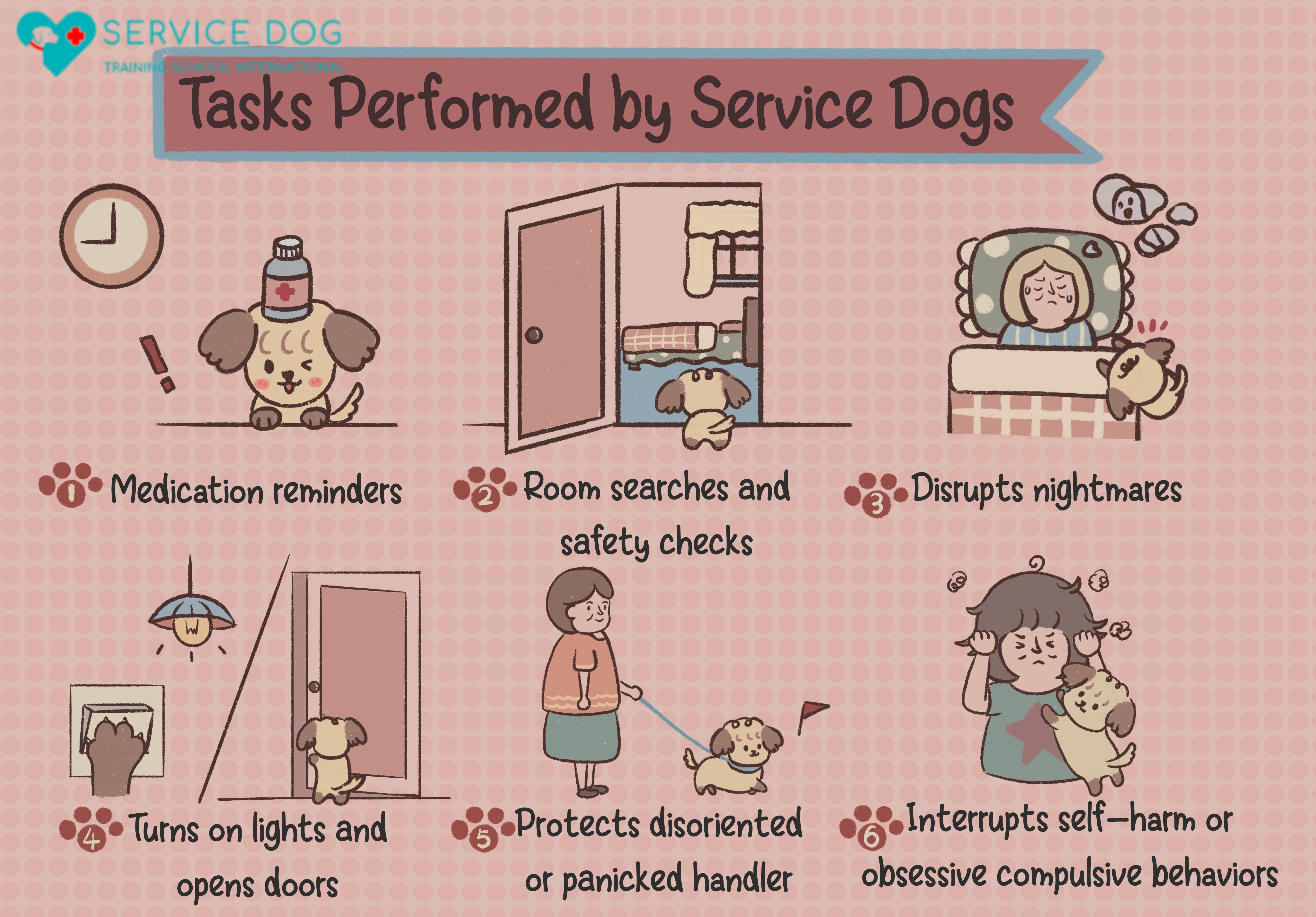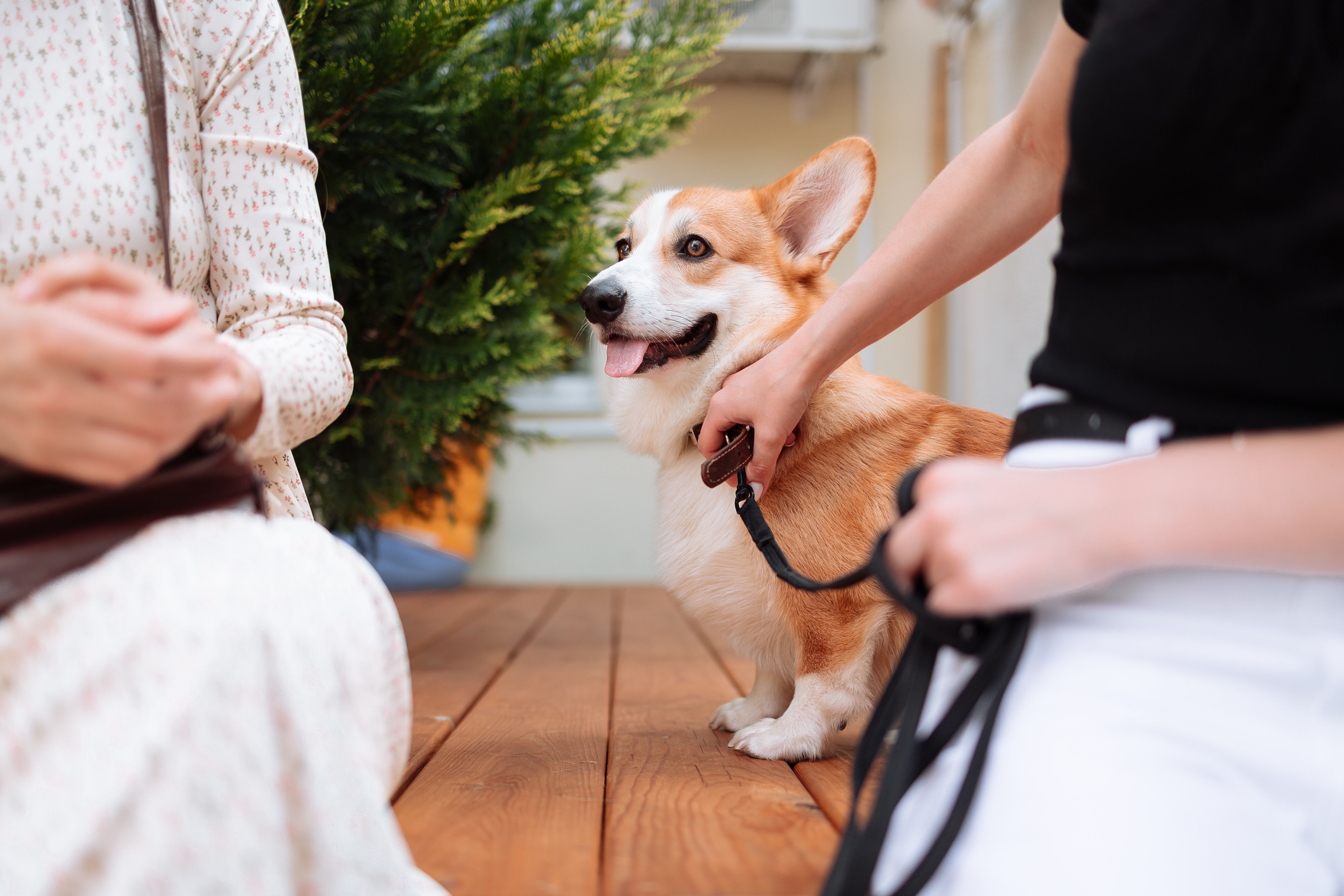
Every service dog has guaranteed access rights either by a convention, a human rights act, or local legislation. The service dogs help persons with disabilities (mental and/or physical) by performing specific tasks like pulling a wheelchair, providing emotional support, and alerting of incoming seizures or low blood sugar. Their role as assistance animals has tremendous importance for the people they help and it is vital to make sure that these animals have proper behavior when accompanying their handler/service dog user in the public space.
Key Goals of the Test
One of the key purposes of the Public Access Test that training organizations and individual trainers have is to make sure the trained service dog is safe to bring among other people. The service dogs need to be calm, undistracted, disciplined, and attentive to the emotional state of their handler. The canines going through the Public Access Test have to prove they can remain under control and avoid defecating, urinating, and barking loudly (unless required by their work/handler). The equipment for the test that is permitted includes a harness, a leash, and a collar. The dog must be controlled humanely and you must avoid injuring the animal. Commands are permitted to be issued via voice and/or hand gestures.
Admittance to the Public Access Test
Admittance to the Public Access Test is granted by training schools and individual trainers when the service dog candidate has all core vaccinations, it has received obedience training, and has proven to fulfill its core duties. The trainers must be polite, and educate the wide public about assistance dogs, and their access rights. Dogs trained to attack, use violence to protect their handler, and act aggressively towards people are immediately disqualified and can not be considered assistance dogs. The dogs must be healthy and most importantly have a stable and positive temperament. Most training organizations and professionals adhere to a test that consists of 14 modules that we will discuss below.
Public Access Test Modules
A task is a certain desired behavior or set of behaviors the dog is trained to habitually perform in response to a command or a particular change in the handler’s emotional state, mobility, and mental state which prompts the dog to perform a task. The modules of the public access test are meant to encompass the most important aspects of the public manners that a service dog needs to exhibit and ensure safe conduct among other animals and humans. The examination will include the following participants — the Service Dog Handler; an Examiner; Assistant/s as necessary; and the Service Dog Candidate. The examiner is likely to follow this order of modules:
1. Leaving a motor vehicle — the dog must leave the passenger cabin in a calm manner as well as bring out any bags/items the service dog user may need. The dog is expected to wait calmly outside if the service dog handler/caretaker needs to bring out a wheelchair or other mobility assistance items. It is imperative that the dog remains focused and not run off or ignore commands. This test may include walking by another dog in order to test if the service dog candidate would pull on the leash and try to go to another dog.
2. Approaching buildings — the service dog candidate and its handler must move through a parking lot in order to access a building. The dog has to move with the pace of the handler and it must not be afraid of cars. If the handler stops for any reason, the dog must do the same without pulling on the leash or pushing the handler.
3. Building entry — the service dog handler and his/her partner need to enter a building in a calm fashion. The dog needs to remain close to the handler, avoid distractions and may need to wait at a reception desk for a few minutes until the handler proceeds further in the building with the dog.
4. Navigating a building — the service dog candidate and its handler need to move confidently through the building and remain within a touching distance. The dog must not wander and pull on the leash. The dog must not attempt to solicit attention from people and try to approach other dogs while inside.
5. Recall from a distance — usually, the handler and the dog will need a wide-open space for this test. A parking lot or a park can serve for this. The dog will be left by itself and commanded to wait. The handler has to move about 5 meters away, call the dog to him/her and the dog must approach in a calm manner without being distracted.
6. Sit on command — the dog will be commanded to sit three times in different settings and it must respond promptly with no more than two commands issued per sitting:
a) The first sitting will be next to a bowl with food, the dog must not try to eat the food or sniff it. The dog should not be taunted with the food and it should ignore it.
b) The second sitting will be performed with a shopping cart. The handler needs to move past the dog while it is sitting and the dog needs to remain in a sitting position without attempting to approach the handler.
c) The third sitting will require the dog to remain in a sitting position while the handler initiates a conversation with another person. The second party will pet the dog on the head after the conversation has ended. The dog needs to remain calm, avoid seeking extra attention and continue sitting unless given another command.
7. Downs on command — this exercise is the same as the sitting test and the dog needs to lie down within the same context as listed above. The participating parties need to act casually and not taunt the dog or attempt to interact with the dog for long periods. If the dog attempts to break the laying position the handler is permitted to command the dog to remain down.
8. Response to Noise — the examiner will walk next to the handler and the service dog, and suddenly drop an item behind (like a note or a clipboard). The dog may react to the sound and turn back. However, the dog must continue with the pace of its handler and it must not react with aggression or fear. No barking is allowed unless that is a part of the dog’s work.
9. Restaurant manners — the handler, the dog, and the examiner will be seated at a table. The dog will have to move under the table its size permits or stay close to the handler. The dog is expected to lie down and move a little for comfort while the handler and examiner enjoy a meal. The dog will fail this part if it moves a lot of attempts to beg for food.
10. Leash recovery — the handler will move with the dog for some time and then drop the leash. The dog must see the leash dropping and the handler will have to call on the dog and demonstrate control from a distance. The dog must approach the handler in a calm manner and both should continue walking together.
11. Transfer of control — the handler will give the leash to the examiner or assistant and move away at about 20 meters. The dog must remain with the person holding the leash, it must not be aggressive and it must not show excessive stress and whine.
12. Building egress — the dog and its handler will have to leave the building in a controlled and confident fashion. The dog must not be distracted and it must not show fear of vehicles passing by the exit/entry of the building.
13. Entry of vehicle — the dog must wait for the handler to open the vehicle door and enter calmly. The dog must respond to “wait”, “go in” and “sit” promptly.
14. Team bond — the handler and the dog must be confident, calm, and easy-going. The dog must demonstrate a positive attitude and remain undistracted. The pair should be good ambassadors for service dog work.
Evaluation
Most examiners will use the following grading for the public access test along with clear Yes/No statements:
A = Always
M = Most of the time (more than half the time)
S = Some of the time (half or less of the time)
N = Never
Most certification programs will require that the service dog candidate and its handler receive a score of 80% in regards to the Yes/No part of the test and attain the "Always" or "Most of the time" qualification on the rest of the examination.
We strongly recommend socializing the service dogs from an early age as well as meeting them with lots of new environments like escalators, busses, trains, outdoor sports events, rural areas, and swimming pools. You need to practice control from a distance without using the leash as well – preferably through practice at home.














